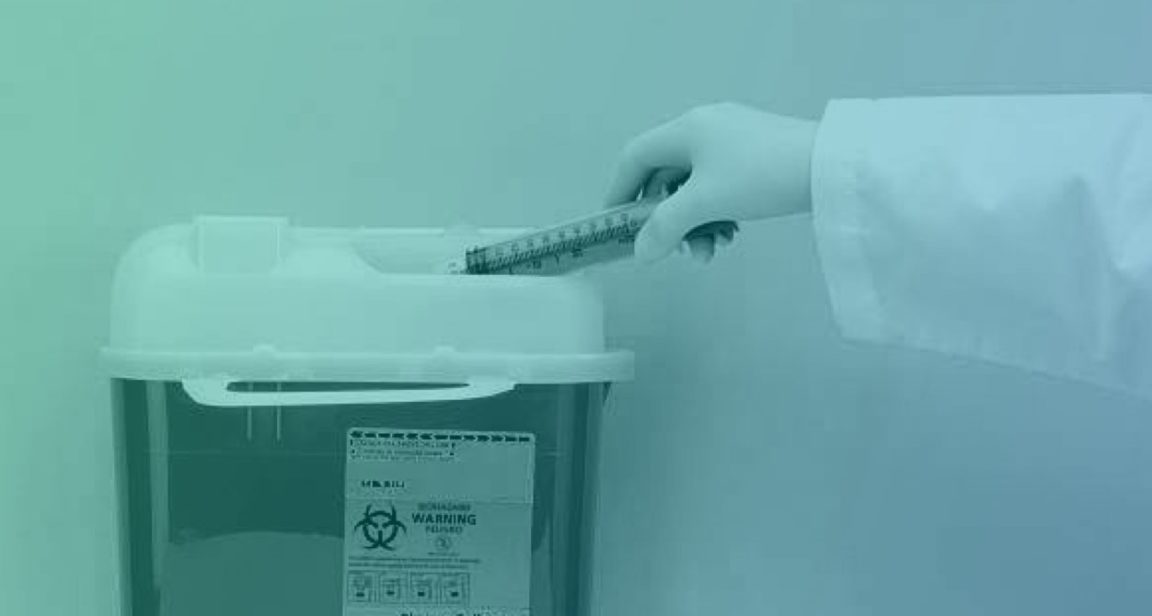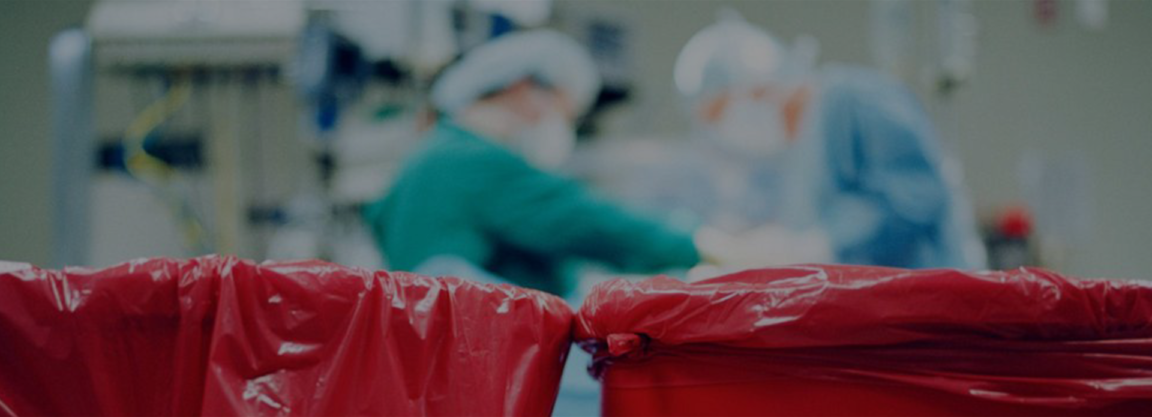Being exposed to medical waste can be extremely dangerous. Exposure to hazardous waste can bring about severe injuries and infections if not handled correctly. It’s necessary to have medical waste services that adhere to the federal regulations of medical waste management in order to keep the handlers, the personnel, and the community healthy. A thorough and precise medical waste management practice is a vital part of a healthy healthcare system.
Approximately 85% of the medical waste brought about by healthcare-related instances are considered to be safe, however, the remaining 15% is composed of unsafe materials that may be toxic, infectious, and even radioactive.
Infectious waste: This includes waste adulterated with blood and body fluids and stocks from the laboratory with infectious agents. This can include wastes from autopsies, and/or wastes from infected patients, bandages, swabs, and other disposable devices.
Pathological waste: This includes human organs, tissues, body parts, body fluids, and carcasses of infected animals.
Sharps wastes: These are things like disposable scalpels and blades, needles, syringes, and other types of necessary medical supplies.
Chemical wastes: This includes reagents and solvents used in the laboratory, disinfectants, sterilant, batteries, and heavy metals found in devices, like mercury inside a broken thermometer.
Pharmaceutical wastes: This includes unused, contaminated, and expired vaccines and drugs.
Cytotoxic: These are types of wastes that have highly toxic substances, and that are carcinogenic, teratogenic, or mutagenic. Examples include drugs used for treating cancer.
Radioactive waste: This includes products that are polluted by radionuclides or radiotherapeutic materials..
Non-hazardous or general waste: These are wastes that do not pose any chemical, biological, physical, or radioactive danger, but they still should be disposed of properly and with a medical waste management system in mind.
Developing countries produce about 0.2kg of dangerous waste per bed each day.
Clinical waste disposal is an essential part of the healthcare sector. There are a few technologies that provide solutions for the healthcare professionals needing a way to regulate and dispose of clinical waste.
PathogenX PX2 is a technology that renders a reliable solution for the management of bio-medical waste at the point of creation. This eliminates the likelihood of discarding biomedical wastes directly into the environment, causing harmful and unhygienic mayhem. Different types of waste that are processed by this technology are made clean and safe, and therefore, they will no longer produce toxic or hazardous compounds.
Cost saving: The current standard practice of biomedical waste disposal is quite expensive for all parties involved. The practice of collecting, storing, and transposing the waste for disposal creates an environmental, financial, and safety burden.
Safety: Currently, most establishments are required to supply documentation and storage for biomedical wastes they have accumulated. This predisposes the waste haulers and staff to chances of unintended injuries.
Simplicity: Your red bag waste and sharp waste containers are placed in the PathogenX PX2 machine. With a simple push of a button, your facility can now process up to 10 gallons of sharps and/or red bag waste daily.
Medical waste is waste produced in a healthcare environment. The wastes can be generated during prognosis, treatment, care, or in the immunization of human beings or animals. Medical wastes can be generated when performing autopsy, when readying a body for cremation, in research relating to the testing and production of micro biologicals, in research that uses animal and human pathogens, and in a multitude of other settings.
A healthcare environment’ does not necessarily mean a hospital or a medical facility- it is used in a large context. Waste assumed to be medical waste is comprised of blood and body fluids, pathological waste, potentially infectious waste, defined radioactive wastes, sharps, vaccines and other wastes discovered to present an adequate risk of being infectious. Medical waste also consists of polluted water, soil, or any debris ensuing from spillage or the release of medical waste.
This is an individual or an entity whose actions results in the production of medical waste, such as doctors and nurses. The generator may be an individual, private or public corporation, a partnership, a board, a firm, or any other association of people. Medical waste generators consist of clinics, dialysis centers, blood banks, surgery centers, laboratories, funeral homes, pharmacies, pet shops, body art businesses, and acupuncture facilities— just to name a few. All of these entities must have a medical waste management plan in place that allows for them to provide clean and efficient waste services to ensure the health of their staff and the public.
Regulated medical waste (RMW) is sometimes referred to as ‘infectious medical waste’ or ‘bio-hazardous waste’ because it have the potential to cause serious health hazards. This is waste that has been infected by body fluids and other probable infectious substances. They pose a considerable possibility of transmitting infections. RMW must be rendered non-hazardous before being disposed of in clinical waste bins.


Veterinary waste disposal is an essential part of a vet’s service. Veterinary waste must be correctly handled, stored, and then removed by an approved waste company, just like waste services for human medical waste disposal. Waste produced in a conventional veterinary practice is assessed to be regulated as veterinary medical waste. These include discarded needles, sharps, stocks of infectious agents, live and attenuated vaccines, culture plates, and animals being researched that were exposed to infectious agents. Regulated veterinary medical wastes should be properly handled, and before being disposed, they should be decontaminated.
Biomedical wastes (BMW) are wastes generated during detection, immunization, or treatment of human or animal research activities. Successful BMW management is necessary for a clean and healthy environment, and therefore, it is the responsibility of every individual to ensure that there is a medical waste management plan in place.

Secure medical waste disposal means that measures are taken to ensure that bio-hazard substances, including red bag waste and sharps, are all disposed of as per the regulations. The process should be safe, convenient, compliant, and flexible. This allows the medical facility to ensure that they are:
• Minimizing the exposure to diseases and contaminants, keeping the workplace clean and healthy.
• Enforcing proper federal regulations, thus avoiding outbreaks, penalties, and/or fines.
Poor disposal of clinical waste, as well as the improper disposal of sharps and pharmaceutical waste, all have the potential to cause worldwide health concerns. That’s why there are many waste management regulations about how to properly provide waste solutions, such as using the PathogenX PX2 Technology for waste treatment before it gets disposed of. If staff or waste management workers become exposed to diseases or bacteria, their health, and the health of everyone they work with, gets put at risk. These regulations exist as a way to ensure that the best safety measures are taken for people who work within the medical field, and medical waste management and proper medical waste disposal allow for us keep our planet healthy and free from potential hazards and outbreaks.